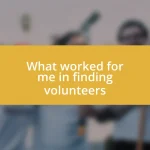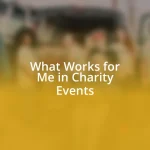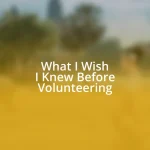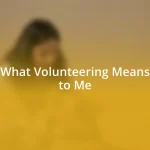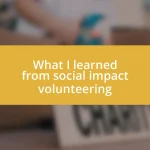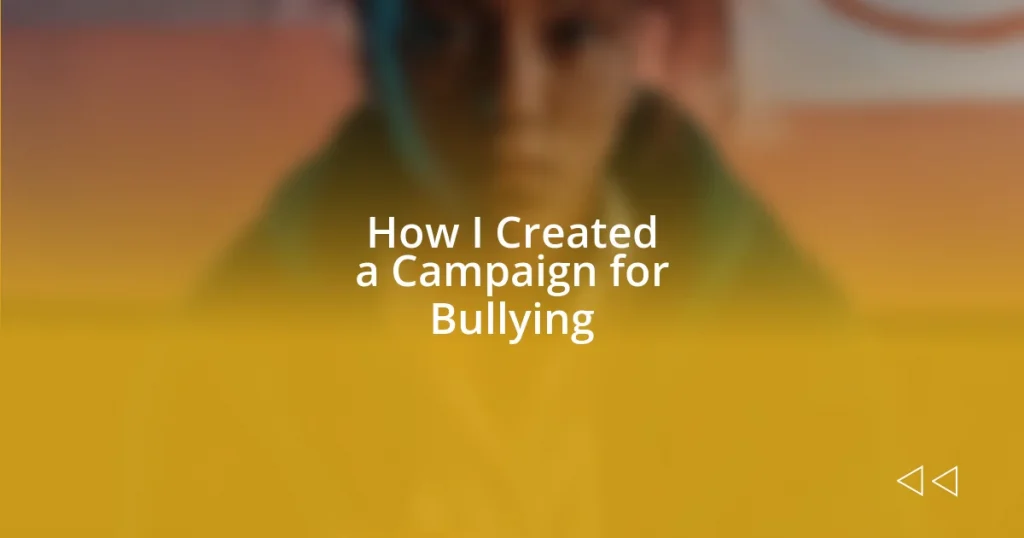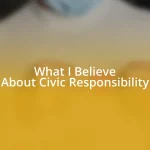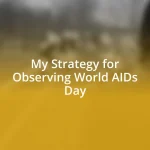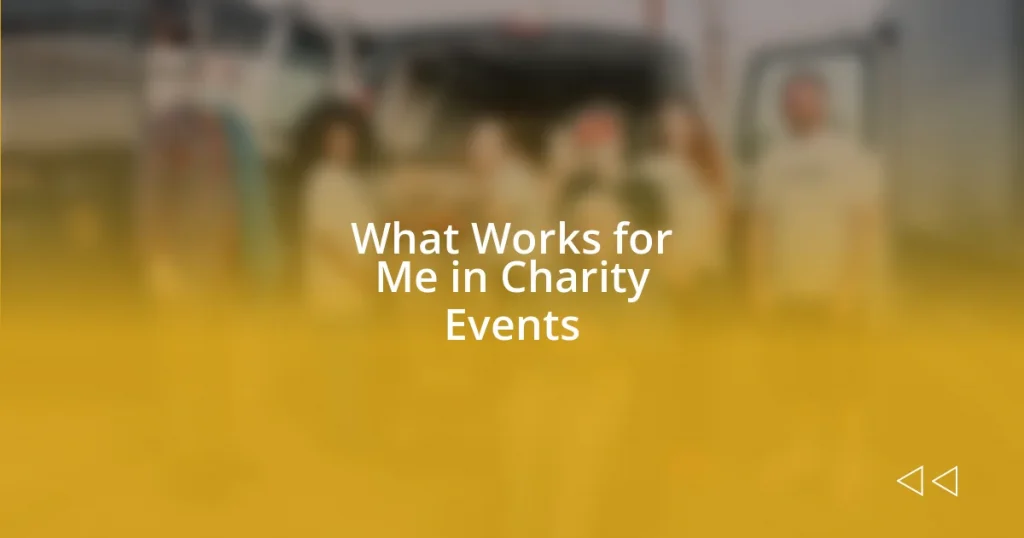Key takeaways:
- Bullying has significant emotional and psychological impacts, highlighting the necessity for empathy and open conversations to support victims.
- Identifying the target audience, including students, educators, parents, and community leaders, enhances the effectiveness of anti-bullying campaigns.
- Utilizing social media for outreach creates dynamic engagement, allowing for real-time interaction and the sharing of personal stories to foster community support.

Understanding bullying and its impact
Bullying is more than just an unpleasant experience; it can lead to serious emotional and psychological consequences. I once saw a close friend struggle for months after being targeted, feeling isolated and defeated. How easily we forget that behind the words being said, there’s a person grappling with their self-worth.
The impact of bullying ripples far beyond the immediate situation—it can affect academic performance, mental health, and even physical well-being. I recall a time in school when I witnessed a classmate’s spirit dimming, their once-bright smile fading under the weight of cruel taunts. It made me wonder, how many bright futures are dimmed by the shadows of bullying?
As I reflect on these experiences, I see the importance of fostering empathy and understanding within communities. People often underestimate the long-lasting scars left by bullying, which can linger into adulthood. From my perspective, it’s vital that we encourage open conversations, allowing victims to share their stories and heal together. After all, wouldn’t we all want a world where kindness significantly outweighs cruelty?

Identifying target audience for campaign
Identifying the target audience for my anti-bullying campaign was crucial. I needed to engage those who could make the most significant impact: students, educators, and parents. When I first brainstormed, I recalled a time when I witnessed a teacher intervene during a bullying incident; her approach not only comforted the victim but also transformed the classroom environment. That moment made me realize that educators play a vital role in tackling bullying, and we need to reach out to them.
When targeting my audience, I considered several key groups:
– Students: Their experiences and voices are essential in shaping the narrative.
– Teachers and School Staff: They can implement effective strategies to combat bullying in real-time.
– Parents: Engaging them helps to foster discussions at home about empathy and respect.
– Community Leaders: Their support can amplify our message beyond school walls.
By understanding each group’s unique perspectives and influence, I could tailor the campaign to resonate deeply with them, ultimately fostering a united front against bullying.

Choosing effective messaging and tone
Choosing the right messaging and tone for my anti-bullying campaign was a learning curve. I realized that the words I selected had to resonate deeply with each audience segment. For example, during brainstorming sessions, I noticed that using straightforward language helped students understand the seriousness of bullying, while a more compassionate tone appealed to the parents’ and teachers’ sense of empathy. I often asked myself, “What do I want my audience to feel after hearing this?” It guided me in crafting messages that mattered.
In my experience, comparisons can be incredibly powerful in conveying messages. I once shared a personal story about feeling alone in a crowd, which made students nod in recognition. Their response reminded me that relatability is key; people connect when they see part of their own lives reflected in what you’re saying. This led me to a heartwarming idea: using testimonials from those impacted by bullying added authenticity and urgency to my campaign. So, I drew inspiration from real stories, showcasing both pain and resilience.
I also experimented with various tones through an array of materials—posters, social media posts, and videos—and each required its unique style. For instance, a video featuring real students sharing their stories needed to be sincere and supportive, while a poster could adopt a more assertive and direct tone. Finding that balance can be tricky, but remember: if I connected emotionally with the audience, I had a much better chance of inspiring change.
| Messaging Style | Target Audience |
|---|---|
| Empathetic Language | Parents, Educators |
| Relatable Anecdotes | Students |
| Direct Calls to Action | Community Leaders |

Utilizing social media for outreach
Using social media for outreach was a game-changer for my campaign. I vividly remember the excitement I felt when I crafted my first Instagram post. I decided to share a compelling graphic, combining statistics about bullying with a hopeful message. It struck me how quickly it spread – friends, students, and even parents started sharing it. Social media creates a dynamic platform where a single post can spark broader conversations.
Platforms like Facebook and Twitter were also pivotal in engaging with diverse audiences. One evening, I hosted a live Q&A session where anyone could share their experiences or ask for advice. The conversation flowed, and I could feel the energy; people were eager to speak out. I often thought, “How powerful is it to share stories in real-time?” This immediate interaction reaffirmed for me that social media can amplify voices that might otherwise remain unheard.
I also utilized hashtags as a rallying point for our campaign. By creating a unique hashtag, I encouraged participants to post their own stories and insights—this fostered a sense of community. I recall one participant shared her experience with bullying and wrote, “I felt invisible, but now I see I’m not alone.” That moment reminded me of the profound connections that social media can nurture when we allow vulnerability to shine through.

Engaging community partners and stakeholders
Engaging with community partners and stakeholders was one of the most rewarding aspects of my anti-bullying campaign. I recall a particularly enlightening meeting with local business owners, where I shared the statistics around bullying in our schools. Their reactions were eye-opening; many admitted they weren’t aware of the issue’s extent. It made me wonder, “What if we created partnerships that inspired change?” Together, we brainstormed ways to promote awareness during their events, merging our efforts for a greater impact.
In reaching out to social service organizations, I found a treasure trove of resources that enriched my campaign. One organization offered to provide trained counselors for schools, which sparked a fantastic idea. What if we organized workshops that empowered students to support one another? This collaboration not only brightened the discussion but also fostered a real sense of community responsibility. It became clear to me that the right partnerships could ignite a movement; everybody wants to be a part of something bigger than themselves.
Building relationships with schools was equally vital. I remember attending a school board meeting, feeling a mix of excitement and nerves. As I spoke about the need for comprehensive anti-bullying policies, I noticed several board members nodding in agreement. The power of compelling arguments combined with earnest passion was palpable. I often ask myself, “How can we ensure every student feels safe and valued?” Those moments fueled my determination to strengthen ties with educators and administrators, leading to a united front against bullying.
